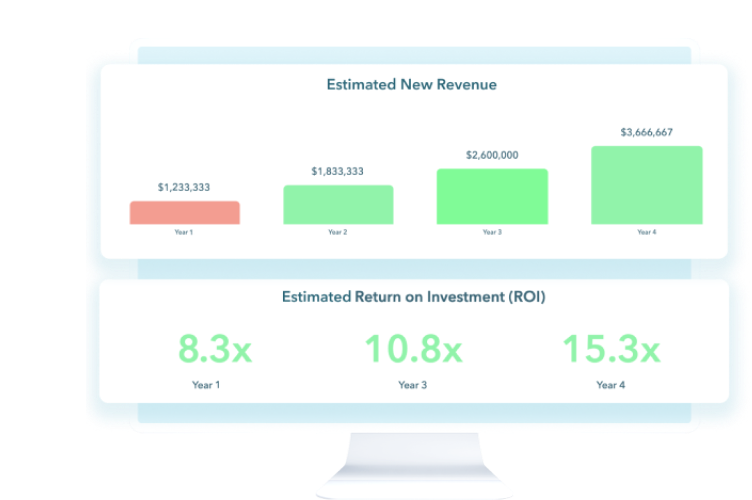 265 Views
265 Views  4 min read
4 min readEvery Health Insurance and Payment sales representative wants to increase their sales. In the past, and to some extent these days, increasing sales meant spending lots of money on advertisements and contacting as many people as possible without any regard to whether they are interested or not. But today’s buyer is much savvier, and decision makers in Health Insurance and Payment are no different. According to a report by the Earnest Agency, 81% of consumers start their buying process by researching online. This means the most effective methods of getting their interest is by supplying helpful and informative content that they are trying to find, when they are trying to find it. This strategy is described as Inbound.
Below are six excellent Inbound strategies to increase your Health Insurance and Payment sales
The first step to growing your sales is to know exactly who you are marketing to. A Buyer Persona is an imaginary personality that mirrors your excellent customer. For example, you might have ”Clinician Carla’, ‘Private Practitioner Peter’ or ‘Medical Director Dan’, all that have an interest in your Health Insurance and Payment product or services. Do some research to learn about their role at work, their objectives, and their difficulties. When you understand your Buyer Personas, it will be easier to target them and boost your sales.
After you build your Buyer Personas, you should create regular content that resolves your ideal buyers’ objectives and difficulties. It is also essential that the content you generate connects with potential customers in various buying phases (Awareness, Consideration, and Decision) of the Buyer’s Journey. You can find out more about their needs in each phase of the journey by doing surveys, calling your existing clients, or checking sector journals and publications. You could also sign up with relevant discussion forums to monitor and learn more about trending conversations. Collect the most talked about topics and create a content calendar for each and every phase. The content can be anything from social media, to blog posts, whitepapers, ebooks, and also reports. Producing content that targets your audience will help develop you as an authority in the Health Insurance and Payment sector and build trust with your leads.
Your Health Insurance and Payment business website is a frequent first point of contact for your leads to connect with your company. You need to make sure that site visitors get a solid impression and have an enjoyable User Experience. Potential customers will be looking at your site on computers and mobile phones, so make sure the layout is responsive. Use fonts and colors that will make the message stand out. Navigation on your site should make it easy for visitors to browse the web page. Lastly, make sure that your pages load quickly. Having an expertly-created site will keep visitors returning and boost the chances of making a sale.
A beautiful website means nothing if no one can find it. Search engine optimization (SEO) is one of the most effective ways of making your site noticeable online. First, you need to do some research for search phrases or words that people use in online search. Make sure these keyword phrases show up in your meta summaries, blogs, page URLs, headlines, and alt photo messages. Internal linking (linking to other web pages and blog posts on your site) is also great for SEO. Using all of these methods will help improve your search engine position, allowing you to draw in more site visitors and raise your lead conversions.
You can use social media to monitor discussions about the Health Insurance and Payment market, your competition, and your brand name. Leveraging social media will give you ideas on topics to blog about. You could also engage your target market on social media and position yourself as a specialist in your industry. Social media is a useful avenue for driving traffic to your website. Share entertaining images and stories about your brand name and leave links to your landing pages. When you upload new content on your site, update your followers on the new information. When your blog posts get shared, liked, or retweeted, you will bring in more potential customers. Some social media networks also enable you to include “Buy now” buttons, which will let potential customers buy without having to go to your site. According to Sprout Social, 70% of customers look at social media before they make a buying choice.
From time to time, you should go back to review your strategies. Doing so will help provide you a better idea of what is working and what isn’t. For instance, you could learn the source of your site visitors. How many are coming from social media? How many are coming from email marketing? Keep an eye on conversions. How many site visitors turn into leads? And then into clients? The bright side is that there are lots of tools like Hubspot CRM that will help you gauge your development.
So are you ready to start your own Inbound sales journey? It definitely takes some time to research, plan, and experiment. Once you fine-tune your sales process based on your customer’s buyer’s journey, and give them the right content at the right time, you will be happy you took the time.
We’ve helped lots of skilled salespeople integrate Inbound right into their sales process. Don’t hesitate to schedule your free strategy session to assess your current methods and get tips on how to increase your sales!
